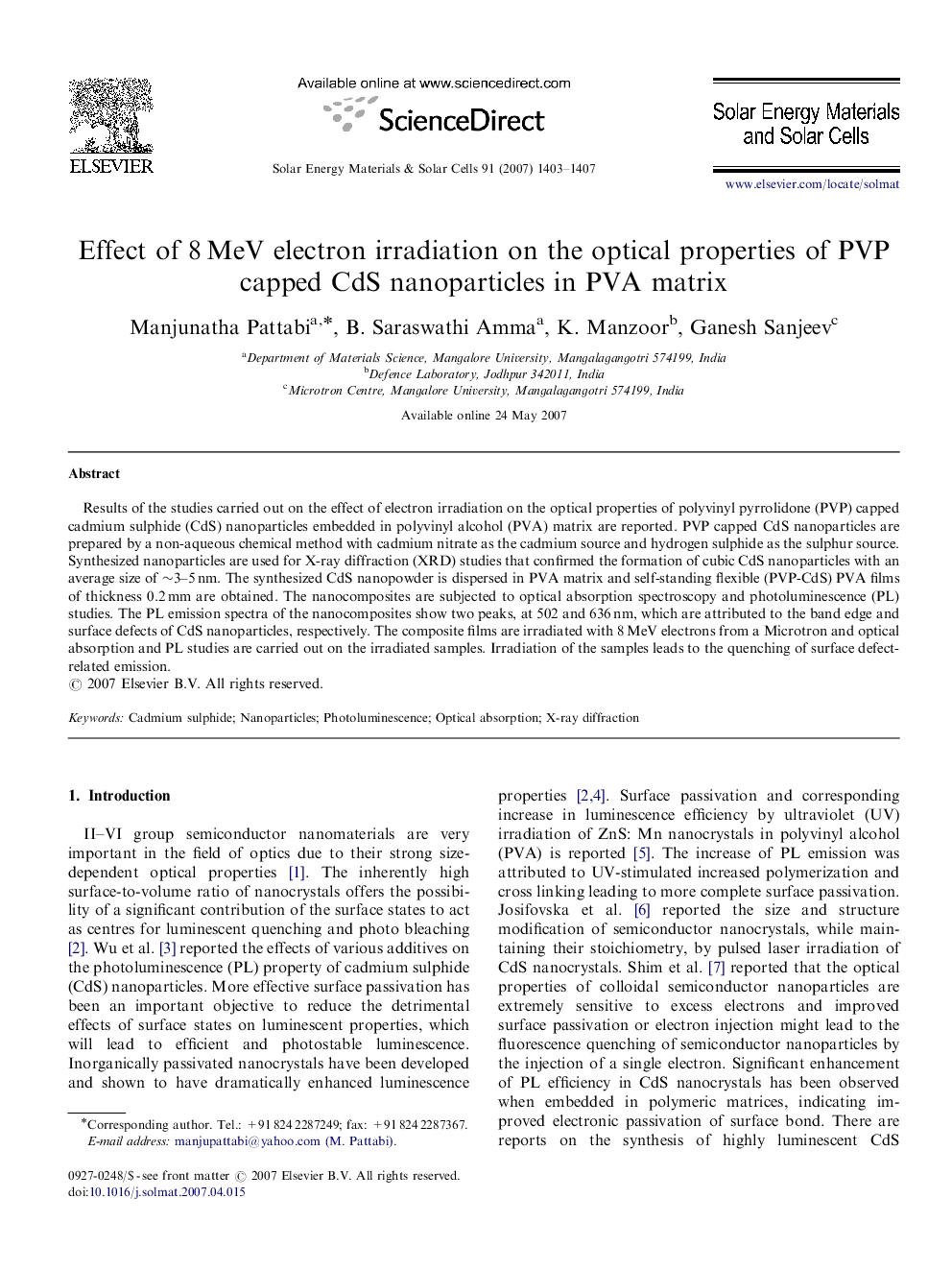| Article ID | Journal | Published Year | Pages | File Type |
|---|---|---|---|---|
| 80963 | Solar Energy Materials and Solar Cells | 2007 | 5 Pages |
Results of the studies carried out on the effect of electron irradiation on the optical properties of polyvinyl pyrrolidone (PVP) capped cadmium sulphide (CdS) nanoparticles embedded in polyvinyl alcohol (PVA) matrix are reported. PVP capped CdS nanoparticles are prepared by a non-aqueous chemical method with cadmium nitrate as the cadmium source and hydrogen sulphide as the sulphur source. Synthesized nanoparticles are used for X-ray diffraction (XRD) studies that confirmed the formation of cubic CdS nanoparticles with an average size of ∼3–5 nm. The synthesized CdS nanopowder is dispersed in PVA matrix and self-standing flexible (PVP-CdS) PVA films of thickness 0.2 mm are obtained. The nanocomposites are subjected to optical absorption spectroscopy and photoluminescence (PL) studies. The PL emission spectra of the nanocomposites show two peaks, at 502 and 636 nm, which are attributed to the band edge and surface defects of CdS nanoparticles, respectively. The composite films are irradiated with 8 MeV electrons from a Microtron and optical absorption and PL studies are carried out on the irradiated samples. Irradiation of the samples leads to the quenching of surface defect-related emission.
